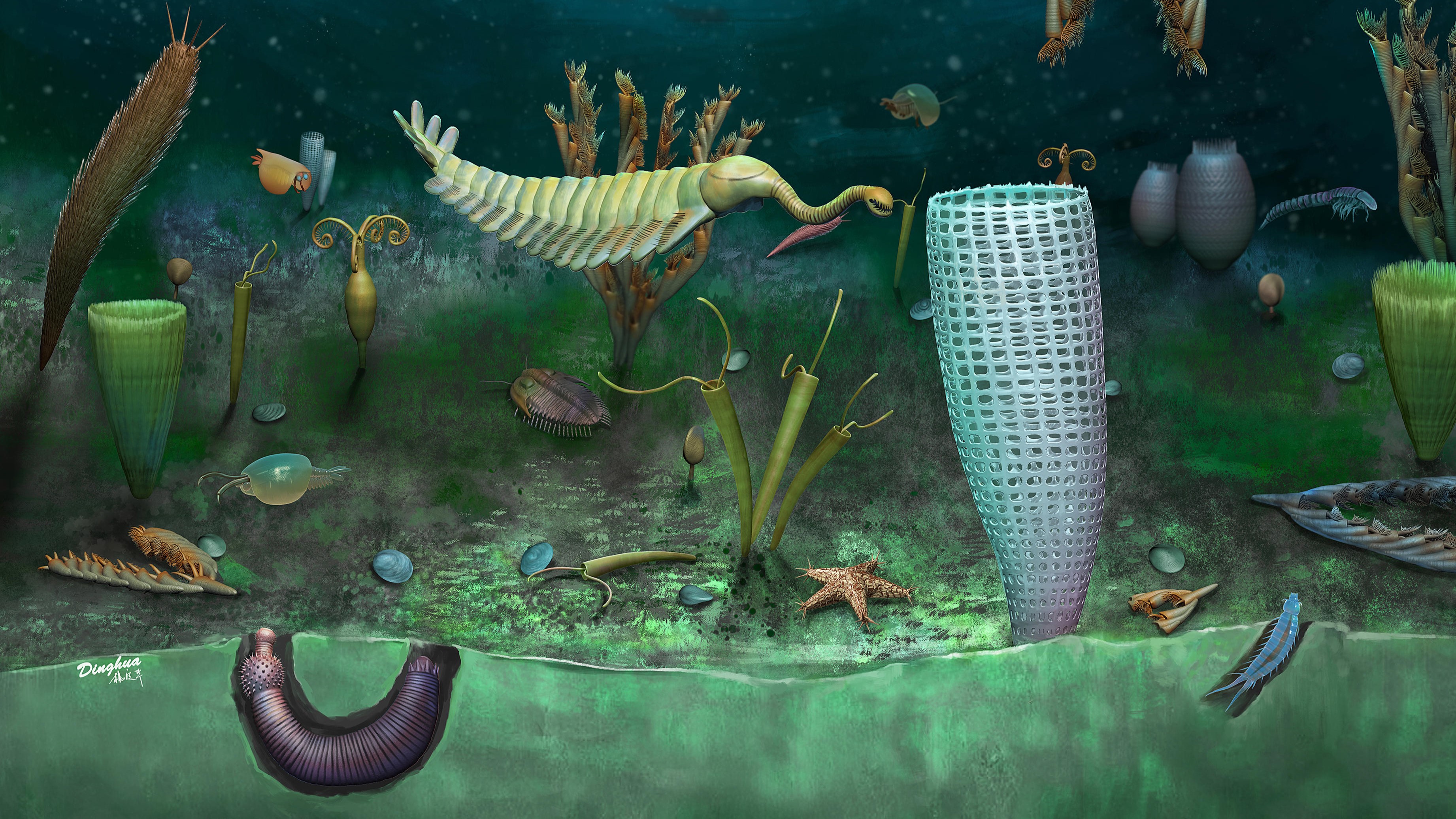462 million-year-old fossilized eyes and brains uncovered in 'secret' Welsh fossil site
Wales' new "Castle Bank" fossil site could be among the world's most important deposits.

An "extraordinary" secret fossil spot in Wales contains the preserved eyes and brains of 462 million-year-old creatures hidden amidst a hoard of unknown species, a new study finds.
Last year, weird "bramble snout" fossils were documented at the site called "Castle Bank," but new research published May 1 in the journal Nature Ecology and Evolution describes the whole fossil deposit.
Hosting a myriad of soft-bodied marine creatures and their organs, which are scarcely preserved in the fossil record, the site resembles the world-renowned Cambrian deposits of Burgess Shale in Canada and Qingjiang biota in China. The rocks of Castle Bank, however, are 50 million years younger and give researchers a unique window into how soft-bodied life diversified in the Ordovician Period (485.4 million to 443.8 million years ago), according to a statement released by Amgueddfa Cymru – Museum Wales.
Researchers believe they've recovered more than 170 species from the site, most of which are new to science. These include what appear to be late examples of Cambrian groups, including the weirdest wonders of evolution, the nozzle-nosed opabiniids, and early examples of animals that evolved later, including barnacles, shrimp and an unidentified six-legged insect-like creature. The rocks are also home to the fossilized digestive systems of trilobites and the eyes and brain of an unidentified arthropod, as well as preserved worms and sponges.
Related: Penis worm's ancient cousin fossilized with its doughnut-shaped brain intact

"Every time we go back, we find something new, and sometimes it's something truly extraordinary," Joseph Botting, an independent researcher and honorary research fellow at Amgueddfa Cymru, said in the statement. "There are a lot of unanswered questions, and this site is going to keep producing new discoveries for decades."
Botting and co-author Lucy Muir discovered the site near their home in Llandrindod Wells during the 2020 COVID-19 lockdown. The exact location is a secret for the site's protection and by request of the landowner, but the authors describe it as a small quarry within a sheep field.
Get the world’s most fascinating discoveries delivered straight to your inbox.
The pair spent more than 100 days at the site, carefully extracting the fossils as the landowner's sheep watched them work. "The sheep appear to have found us interesting, rather than disruptive," the authors wrote in a reporting summary attached to the study.
Botting and Muir are both independent researchers and not employed as academics, so they crowdfunded to buy a microscope to study the fossils in more detail, many of which were at most 0.1 inch (3 millimeters) long, according to a statement released by the pair. They then teamed up with an international team of colleagues to complete the newly published research.
The ecosystem preserved at Castle Bank may have been a nursery for young animals, with only juvenile examples of the most common trilobite species — named Ogyginus corndensis — found at the site. However, the study authors also noted that the small size of the fossils, in general, was "striking" and may simply be a feature of the community of animals that lived there.

Patrick Pester is the trending news writer at Live Science. His work has appeared on other science websites, such as BBC Science Focus and Scientific American. Patrick retrained as a journalist after spending his early career working in zoos and wildlife conservation. He was awarded the Master's Excellence Scholarship to study at Cardiff University where he completed a master's degree in international journalism. He also has a second master's degree in biodiversity, evolution and conservation in action from Middlesex University London. When he isn't writing news, Patrick investigates the sale of human remains.
